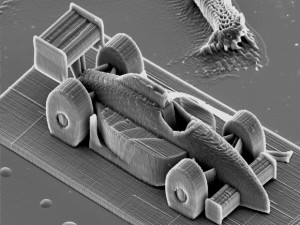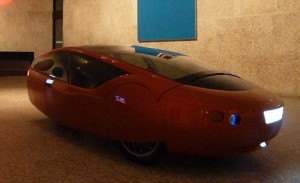As the close of 2013 occurs, this blog will be looking toward next year. 3-D printing has become a very widely reported topic, not only in technical circles but also in financial ones. Why is it being mentioned in a nano blog? The reason is that everything points to printing on the nano-scale in the not too distant future. Current limits for accuracy are 16 micrometers or 16,000 nanometers.
3-D printing is an additive manufacturing technique that can make a 3-D solid of almost any shape from a computer model. The equipment lays./deposits/positions successive layers of liquid, powder, or other material to build a structure from a series of volume cross-sections. The resultant structure matches the computer model within the placement accuracy of the equipment. This technology is currently employed in both prototyping and manufacturing. There are a number of relatively inexpensive 3-D printers available, which are available in the cost range of a powerful home computer. The higher accuracy ones with faster build times can be as high as $1 million or more. These techniques are being employed for manufacturing improved parts for consumer products.
So how does this impact nanotechnology? The picture shows the results of an experimental process that created the model, which is only 500 micrometers long. The printer can produced a hardened 5 meter line of resin in 1 second [Ref. 1].
Current applications of 3-D printing include dental implants, medical prosthetics, jewelry, footwear, and automotive parts. The ‘Urbee’ was made using a special printer which built up layer upon layer of bodywork – almost as if the car was ‘painted’ into existence, except using layers of ultra-thin composite that are slowly ‘fused’ into a solid [2].
With the coming of printers to the hobbyist, the ability to make replacement item will be accepted as normal, which might have an impact of suppliers carrying spare parts. The question that needs to be considered is can we also “replicate” food through the 3-D process. Tomorrow’s blog will address that topic.
References:
[1] http://www.youtube.com/watch?feature=player_embedded&v=5y0j191H0kY


